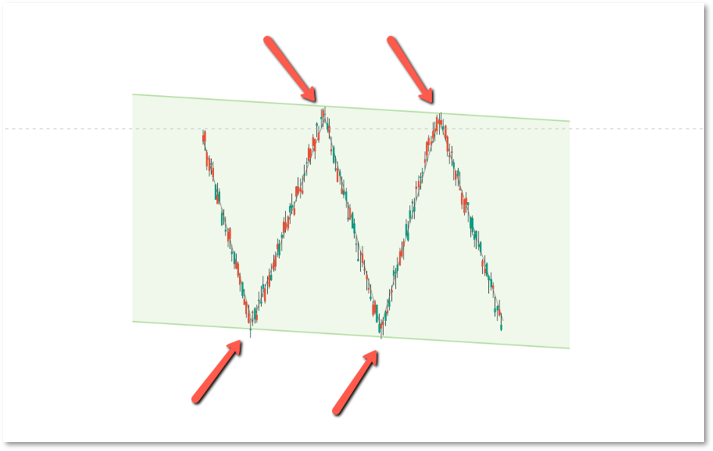EFG Methodology
In-depth technical analysis handbook
At EFG we believe in two things. Firstly, financial markets are fractal in nature and that Chaos theory can be applied to the markets. What may seem like random price movements and patterns can actually be determined by using a systematic multi-timeframe approach along side cross-assets correlation.
The Fractal nature of markets stem from the Fractal Markets Hypothesis which takes into account investor behaviors that influences price. On a day-to-day basis, investors make financial decisions in the markets. Over a period of time, these decisions are repeated over again, over a much longer timeframe and thus allow us to notice a cyclical pattern.
Similarly, under Chaos Theory, the financial system that is seemingly unpredictable in the long term, can actually come from a very deterministic system on the shorter timeframe. Like how the butterfly effect actually describes that the beat of a butterfly’s wings in the Amazon could influence the weather in China.
By putting these two together and applying multi-timeframe analysis, we are able to identify key price inflexion levels where our clients can best position themselves.
Chart Presentation is based on 3 factors:
- Graphical levels
- Single swing high/lows
- Multiple swing high/lows
- Pullback support/resistance
- Overlap support/resistance
- Trend lines (At least 2 touches)
- Channels (At least 3 touches)
- Chart Patterns
- Fibonacci levels
- Fibonacci Retracements
- Fibonacci Expansions
- Fibonacci Extensions
- Fibonacci Projections
- Indicator levels
- Natural Moving Averages
- RSI/ Stochastic
- Ichimoku cloud
- MACD
The EFG Approach
☐ Are there horizontal levels? (pullbacks, overlaps, significant swing highs/lows)
☐ Are there trend lines? (using significant swings)
☐ Any channels? (min 4 touches – 2 at top, 2 at bottom)
☐ Any other chart patterns? (wedges, triangles, double top/bottom)
☐ Any death / golden cross? (200/50 SMA)
☐ Any natural moving average that catches nice price movements? (look for at least clear 3 bounces/reactions)
☐ Stochastic/RSI – Check recent 3 bounces/reactions. Did they line up nicely at a certain stochastic/RSI level (within 5% of each other).
☐ Stochastic/RSI any clear bullish or bearish divergence? (check for long term and short term)
☐ Correlation – any strongly correlated currency pairs that are supporting your bias?
☐ Correlation – any strongly correlated asset class supporting or against your bias? (eg. USDCAD and Oil)
☐ Correlation – for crosses, what does the majors say? Eg. AUD/NZD should check AUD/USD and NZD/USD
☐ For reversals – any Fibonacci confluence (retracement, extension, expansion, projection) to support the reversal?
☐ For reversals – has shorter term price broke the 23% retracement? (good trigger for price to drop further)
☐ For breakout – did price break a recent Fibonacci confluence area?
☐ For breakout – any chance to get in on the pullback (discount)?
Analysis Presentation
Starting Points
When picking the starting point of pivot (entry), support, resistance levels, these are the rules:
- Check if there’s a swing high/low, pullback or overlap level to start from.
- Go as far back as possible.
- Intersecting the wicks is preferred (refer to image for example)
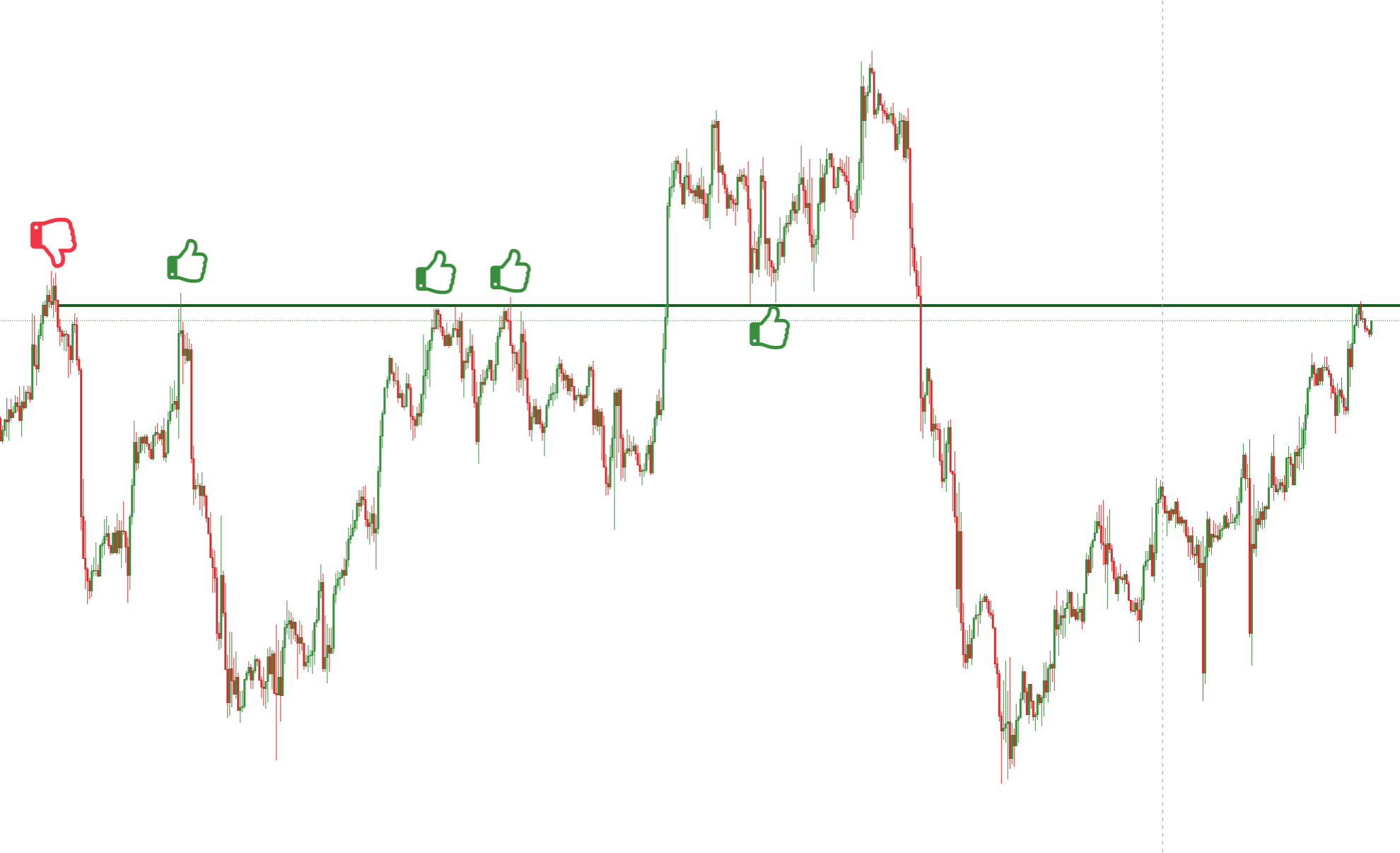

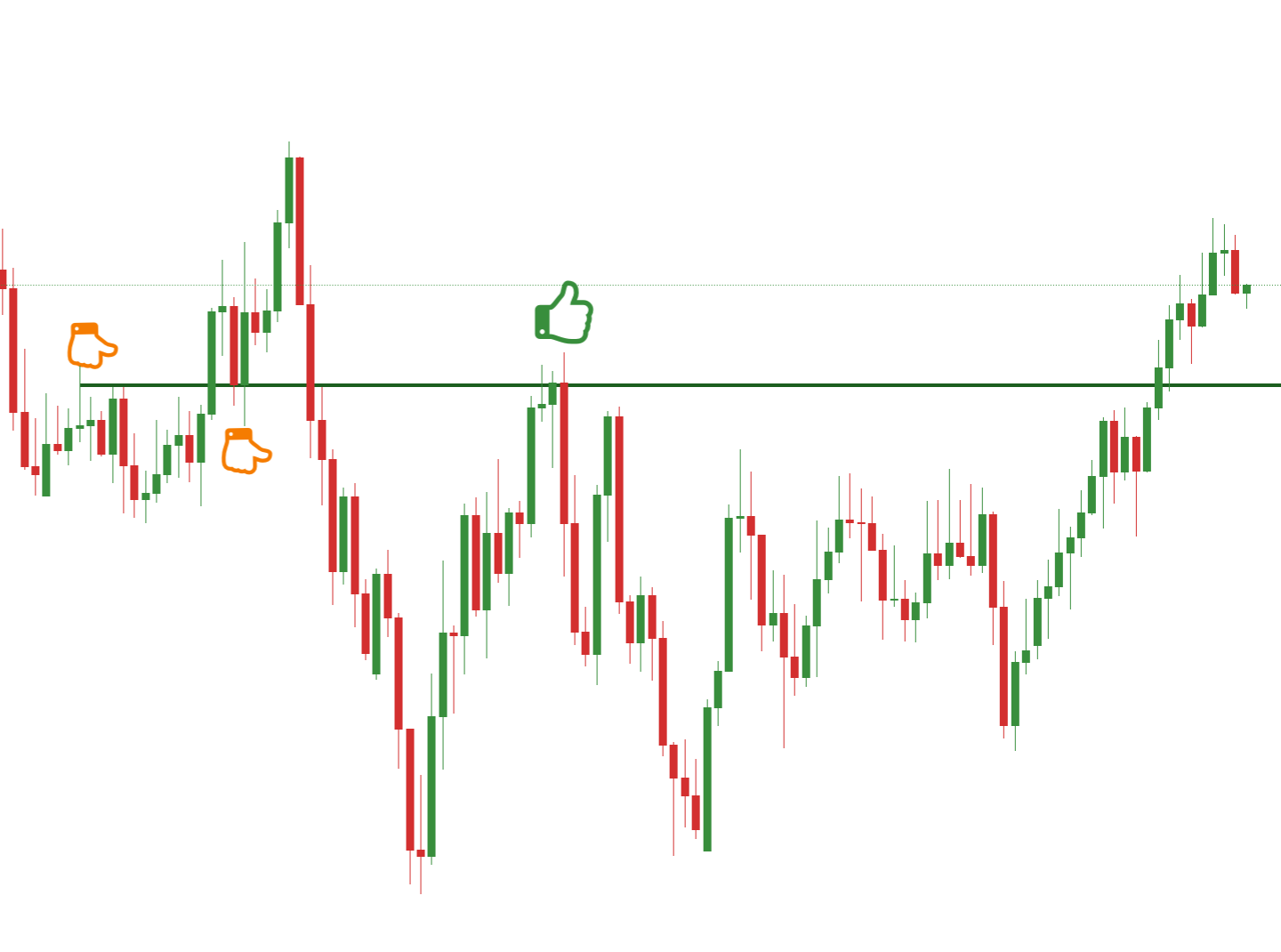
Fibonacci Explanations
Fibonacci Rule: Trend line MUST Follow Price Structure Closely
(Multiple pictures)
Whether you are drawing Fibonacci retracements, projections, extensions or expansions, there is one important rule:
– Your Fibonacci trend line MUST follow price structure clearly.
– Trend line can deviate from price structure, but not by too much.
In the example on the right – you can see two examples. One follows price closely while the other cuts through price structure.
The trendline can deviate from price structure by a bit, but most of it should follow price structure.
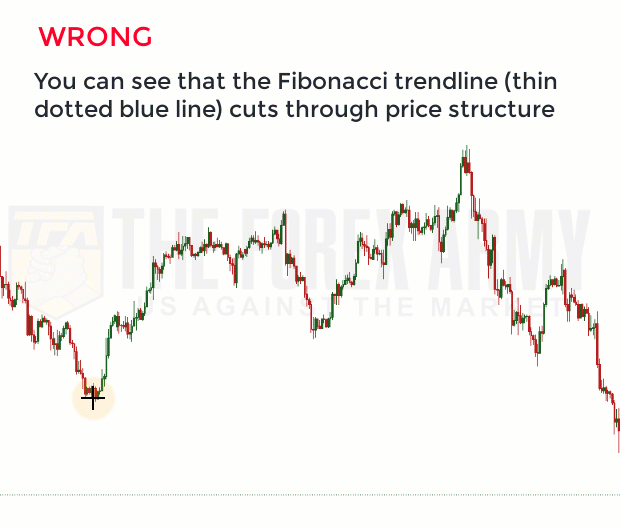

Fibonacci Retracement
Tool used: Fibonacci retracement
Fibonacci Retracement percentage used:
- -61.8% (Fibonacci expansion)
- -27.2% (Fibonacci expansion)
——————————————– - 23.6%
- 38.2%
- 50%
- 61.8%
- 78.6%
——————————————– - 127.2% (Fibonacci extension)
- 161.8% (Fibonacci extension)
Although the tool used is Fibonacci retracement, it can lead to 3 types of Fibonacci. Expansions (those below 0%). Retracements (those from 0-100%) and extensions (those above 100%).

Fibonacci Projection
Tool used: Fibonacci projection
Fibonacci projection (which uses 3 points) should not be confused with Fibonacci retracement (which uses 2 points).
Fibonacci projection percentage used:
- 61.8%
- 78.6%
- 100%
- 127.2% (weak, only use as supporting argument)
- 161.8% (more often used in Elliott Wave)
- 200% (only use if looks like wave 3 over-extension)
Pro tip:
You are usually looking for a “Flash” zigzag in these type of Fibonacci projections.
Explanation:
For Fibonacci projections, you are taking the vertical distance from (1) to (2) and projection it from (3) onwards.

Fibonacci Expansion
Tool used: Fibonacci retracement
Fibonacci Retracement percentage used:
- -61.8% (Fibonacci expansion)
- -27.2% (Fibonacci expansion)
Pro tip:
Look for a “Flash” zigzag when identifying these fibonacci expansions.
Explanation:
The clearer the movement of the “Flash” zigzag, the better. We ideally need to wait for prices to retrace at least 50% in point (3) before taking off in the other direction (also preferably in a straight line movement).
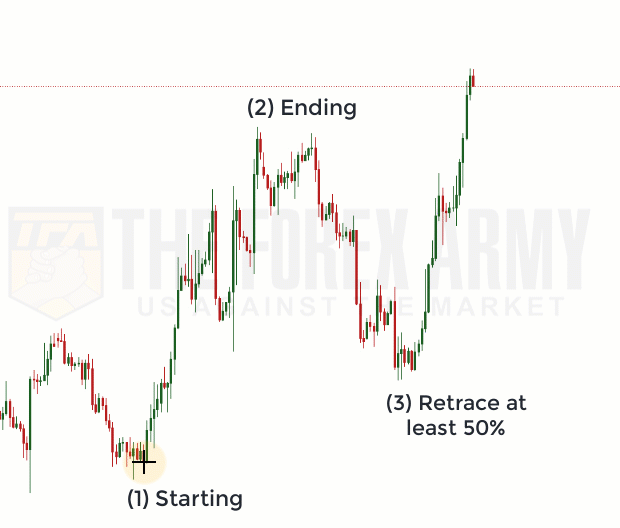
Fibonacci Extension
Tool used: Fibonacci retracement
Fibonacci Retracement percentage used:
- 127.2%
- 161.8%
Pro tip:
Look for a “Nike” tick to find these very powerful setups.
Explanation:
Price usually retraces the entire move from (1) to (2) – hence the reason the retracement is >100%. The clearer the movement of the “Nike” tick, the better.
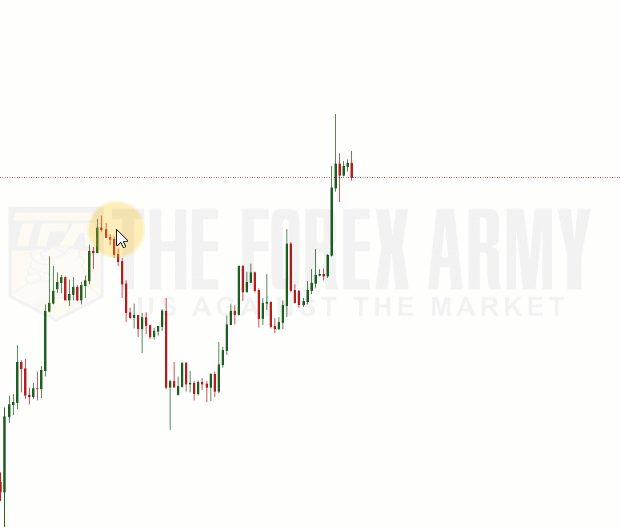
Fibonacci Confluence
Explanation:
Fibonacci confluence is when you line up multiple fibonacci levels together to come up with a strong area where they are quite close to each other.
From there, you play a contrarian trade (reversal) by either playing a bounce of a reversal.
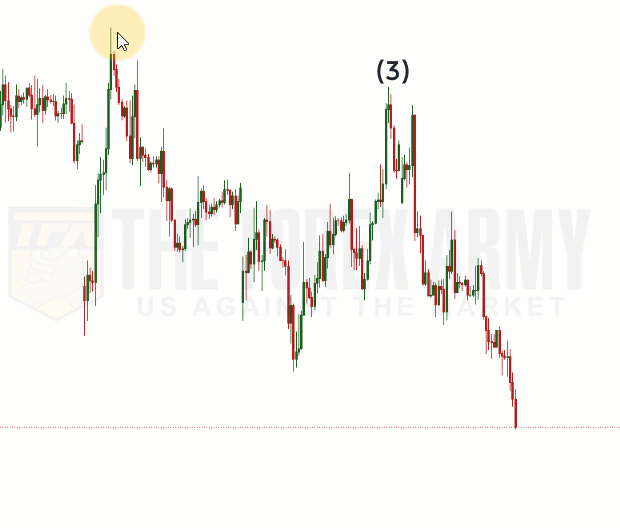
Significant Swings (Correct)
This forms the basis of all starting, middle and ending points when using Fibonacci.
You shouldn’t pick swing highs and lows that are not significant. Meaning, they need to have a relatively big move before/after it.
As a rule of thumb, use at least 15 bars before/after for these significant swings.

Insignificant Swings (Wrong)
These are insignificant swings and should not be used when drawing all forms of Fibonacci. They are too small and won’t be effective.

Graphical Elements Explanation
Single Swing High/Low Resistance (weak)
Using a recent swing high/low is a weak level if it the only level.
You can use it as a take profit target or stop loss level. But you should not use it as an entry if there is no other supporting arguments (such as Fibonacci or other graphical levels).
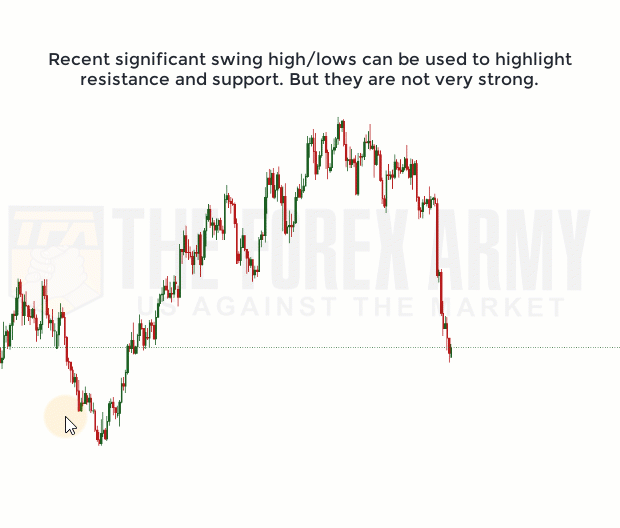
Multiple Swing High/Low Resistance (strong)
If at least 2x swing high/low levels line up nicely, it is a much better level to use.
Try to find areas where these might line up. It does not need to be the exact level – as long as it’s an area that is near enough.

Pullback Support/Resistance
(multiple pictures)
A pullback Support is a strong level of support. It breaks out from a previous resistance level and price is now dropping back to visit it again.
Pro tip:
When a pullback Support lines up with a Fibonacci level, it is very powerful.
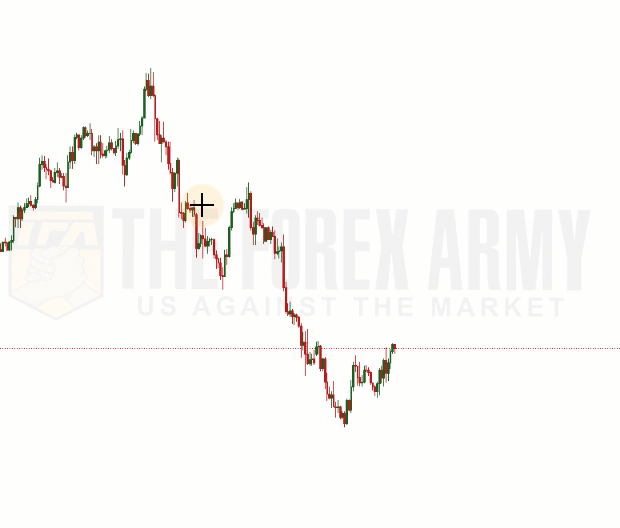
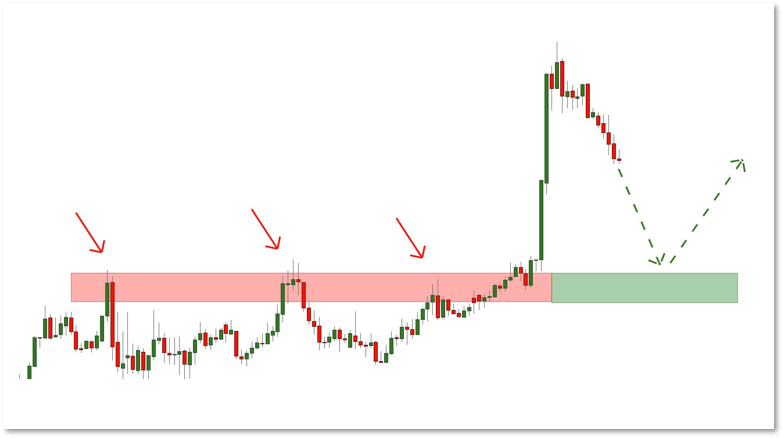
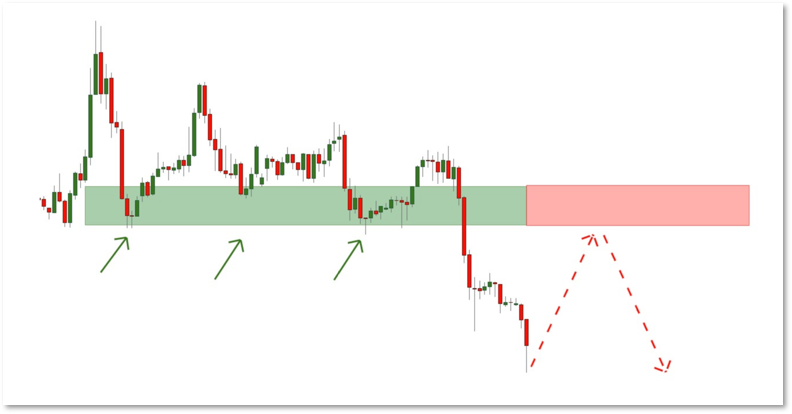
Overlap Support/Resistance
An overlap support is when there are prices touching the line from the top and bottom.
This means that there are bulls and bears respecting that area so it’s an important point to take note of.
Pro tip:
If the overlap area lines up with other elements such as Fibonacci or graphical elements, it would make it even stronger.
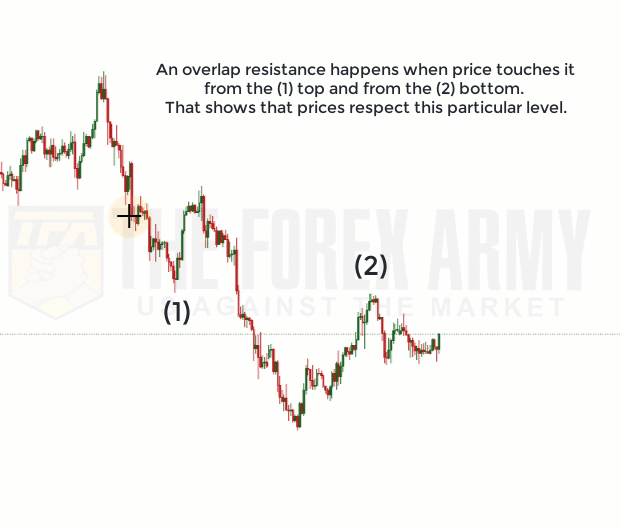
Trendlines : Wrong Way
Descending trend lines should be from the TOP. Not the bottom.
Ascending trend lines should be from the BOTTOM. Not the top.
In this example, we can see that the descending trend line is drawn from the bottom and this is a mistake.
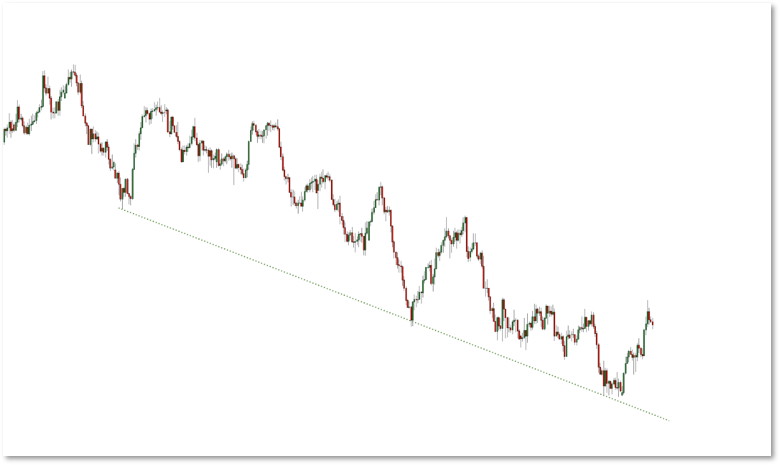
Trendlines : Correct Way
(multiple pictures)
Descending trend lines should be from the TOP. Not the bottom.
Ascending trend lines should be from the BOTTOM. Not the top.
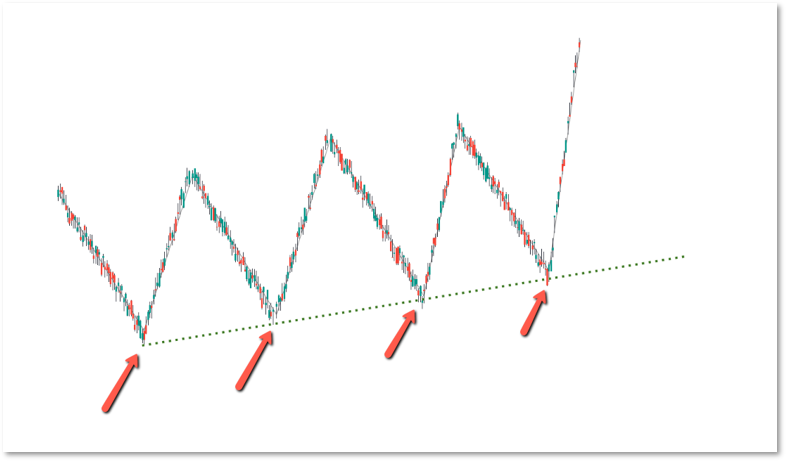

Trendlines : 3 Significant Touches
(multiple pictures)
Trend lines should at least have 3 significant touches.
2 touches tend to be more coincidental which is why we go for at least 3 touches.


Channels: 4 Significant Touches
Channels require at least 4 significant touches. 2 at the top, 2 at the bottom, for it to be considered a valid channel.
They do not need to be in consecutive order like the picture on the right.
